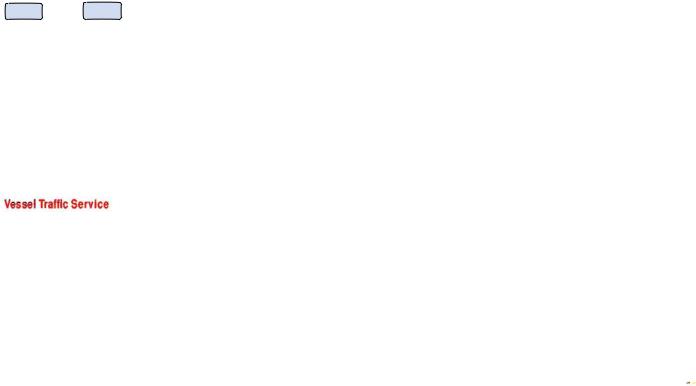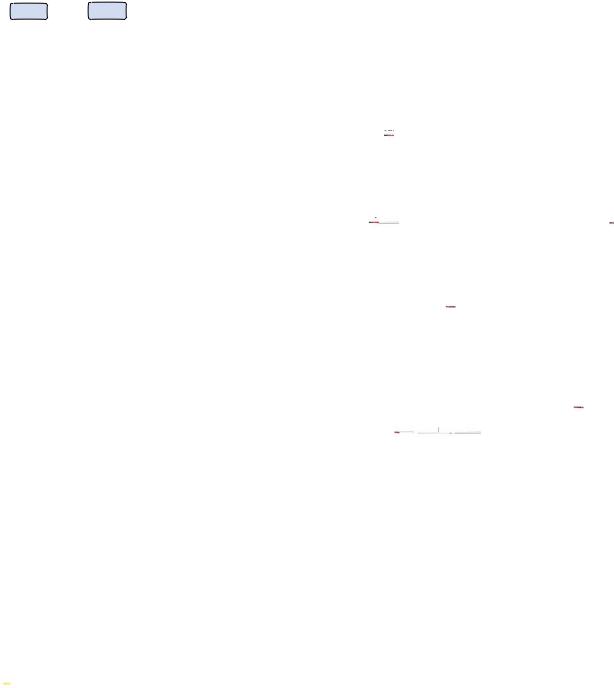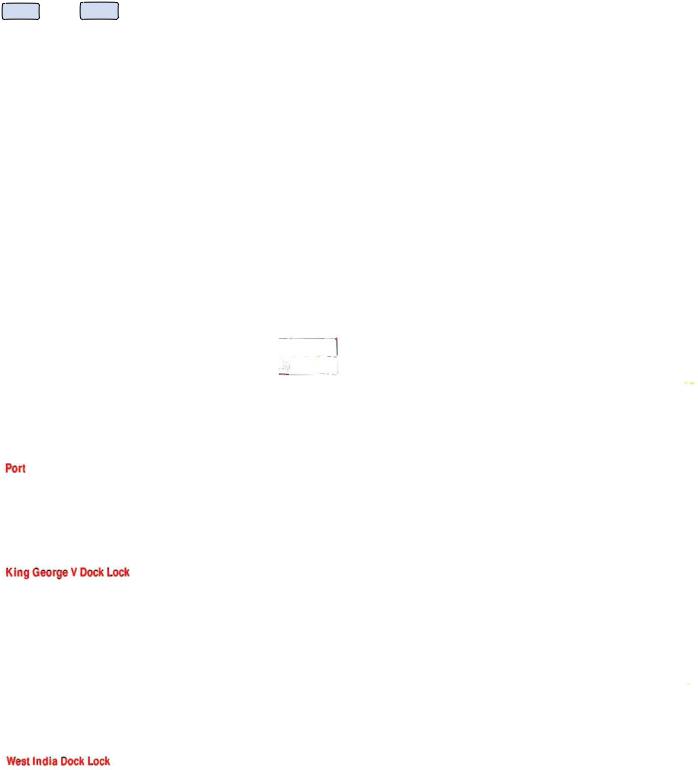
NP 286(1) United Kingdom and Europe
.pdf

Contents Index
UNITED KINGDOM
(3)Provisional Pilotage Order:
(a)All vessels requiring the services of a PLA Pilot must make a Provisional Order to Port Controf Centre. This includes inward-bound vessels, outward-bound vessels leaving a berth. buoy. tier or anchorage. as well as those moving from one berth. buOy, tier or anchorage to another.
(b)This Provisional Order should be given 24h in advance of the requirement for a Pilol. The following information is required:
(i)Location at which the Pilot is required
(ii)Vessel'sIMO number
(iii)GT
(iv)LOA
(v)Operating draught
(vi)Full manoeuvring speed
(vii)Destination (name of berth or anchorage lor an inward-bound passage)
(viii)Destination (for an outward-bound passage)
(ix)Date and time at which the Pilot is required
Note: Details required by Port Control Centre should be sent using either the standard ·Port 01 London Authority - Movement, Pilotage and PEC Notilications" lorm which may be downloaded from the Port of London Authority website: www.pla.co.uk, or the web-based ordering system PISCES. Reporting vessels should send the completed notification form to the Port Control Centre 24h in advance 01 arrival/departure/shifting berth or within 1h of departure from last port of cal (if nearer), reporting any changes to Port Control Centre.Where it is not possible to include requirements for pilotage with the movement notification. provisional orders must be received belore 1500 01 the day prior to that on which the pilotage service is required.
(4)Confirmed Pilotage Order:
(a)Confirmation of the requirement for a Pilot should be given to Port Control Cenlre_ This constitutes Compulsory Notice and shorter notice than is set out (see Notice Requirements below) may attract a surcharge and may result in delay to the vessel.
(b)A confirmed order will not be accepted without the draught 01 the vessel. Failure to give an accurate confirmed draught, or to keep PLA informed of any subsequent changes, may result in a delay to the vessel, or a charge for cancelling and reallocating the Pilot.
(5)Notice Requirements: A confirmed order must be given in advance 01 the vessel'sETA at the Pilot Station as follows:
(a)Inward·boundvessels:
(i)8h Irom the Sunk Pilot Station
(ii)6h Irom the NE Spit and Warps Pilot Stations
(iii)6h by vessels which are inward-bound from any E coast port within the range of Great Yarmouth to Dover
(b)Outward-bound vessels (and vessels moving between berths or vessels moving from an anchorage other than in the Estuary). Aconfirmed order must be given in advance of the vessel's ETD as follows:
(i)6h if the vessel is proceeding beyond Sea Reach No 1Lt buoy
(ii)4h if the vessel only requires the services of a River Pilot as far as Gravesend or Sea Reach No 1Lt buoy
(c)Vessels at anchor in the Esluary:
(i)8h by vessels which anchor in the general vicinity of the Sunk or are inward-bound from any port adjacent to the Nand NE limits of the London Pilotage District
(ii)6h by vessels which anchor in the general vicinity of the Ouler Tongue or Margate Roads
(iii)4h by vessels proceeding lrom the inner London anchorages (Mouse, Southend and Warp Deep Water, Great Nore. Southend Lettered, Leigh Small Ships. Chapman, Mucking, Higham Bight and Gravesend Lower)
(d)For vessels whose voyage is of less duration than the minimum notice requirements, the maximum notice should be given.
(6)Surcharges: Any orders or changes of less than 8h notice to ETA or 4h notice
to ETD must be notified to Port Control Centre, Gravesend and will be subject to a surcharge on asliding scale dependent on notice given. An exception is granled 10 vessels engaged in short sea voyages who may give notice of the confirmed order for a Pilot and ETA at the time of leaving the previous port to a minimum notice of 4h after which surcharges will be applicable. However, vessels bound for London (or Medway Ports). which anchor in the general vicinity of the Sunk. Outer Tongue or Margate Roads (i.e. al ouler anchorages). or are inward-bound from any port adjacent to the limits of the London Pilotage District, are still required to give n01less than 8h notice of the requirement for a Pilot. Surcharges may also apply lor vessels Of less than 7·5m draught embarking a Pilot al the Sunk rather than the NE Spit Pilot Slalion.
(7) Vessels requiring a Pilot to embark or disembark at a continental port
should obtain the approval of the Pilotage Manager at the PLA Pilotage Administration office not later than 3 days before the service is required. (Telephone: +44(0)1474 562362, Fax: +44(0)1474 562378 or e-mail: pilotage@pta.co.uk)
332



Contents Index
UNITED KINGDOM
NOTE:
Margate Roads and Tongue anchorages are outside the Port of London Authority Limits: Margate Roads is frequently used for shefter by a number of vessels not bound to or from London. London VTS does not routinely monitor vessels within these anchorages.
CONTACT DETAILS:
(1) Port Controt Centre
Call: London VTS
Telephone: +44(0)1474560311 (3 lines)
Fax: +44(0)1474352996
E·mail·shipcon@pla.co.uk
Estuary Sector (Seaward limtt of VTS Area to Sea Reach No 4 Lt buoy)
VHF Frequency: Ch 18 (Secondary) 69 (Main)
River Sector (Sea Reach No 4 Lt buoy to Crayford Ness)
VHF Frequency: Ch 20 (Secondary) 68 (Main)
Emergency
VHF Frequency: Ch 1667
Chief HrMr
Telephone: +44(0)1474562268
Hr Mr (Lower Thames)
Telephone: +44(0)1474562212
(2) Thames Barrier Navigation Centre
Call: London VTS
Telephone: +44(0)20 88550315
Fax: +44(0)2O 88547422
Barrier Sector (Crayford Ness to Teddlngton Lock)
VHF Frequency: Ch 14 (Main) 22 (Secondary)
Emergency Only
VHF Frequency: Ch 16 67
Hr Mr (Upper Thames)
Telephone: +44(0)20 72652656
HOURS: H24
PROCEDURE:
(1) Vessel Traffic Services (VTS)·Definition within the UK (see GENERAL NOTES) requires that ··AIIvessels entering aVTS area are re:juired to participate in and comply with the rules of that VTS". the 'rules'·of London VTS means all those provisions contained in the Pilot and VTS sections of the LONDON entry within Admiralty List of Rado Signals. Vol 6(1) (NP286{I)).
(2) For details of the Merchant Shipping (Traffic Monitoring and Reporting Requirements) Regulations 2004 see GENERAL NOTES.
(3) It is recommended that a 'readreceipt" be obtained lor mandatory notifications
transm~ted by e·mail.
(4) Anchorages In the Queens Channel are provided for the exclusive use 01 vessels engaged in bunkering with the permission of London VTS.
(5) Margaret Ness to Blackwall Point: Vessels intending to navigate in the area between Margaret Ness and Blackwall Point should noIe the special provisions for the Thames Barrier Control
(6) Vessels with air draught of 45m or more: The area between Bulls Point and Ware Point encompasses the London C~ Airport glide path. All vessels including pontoons with mobile cranes embarked. having an air draught 01 45m or more intending to navigate between Bulls Point and Ware Point should inform London VTS 01 their intention giving at least 24 hours notice.
(7) Restrictions in overtaking exist upriver of Tilburyness and at any time when a specified vessel is involved. In theSe circumstances. vessels should obtain clearance lrom London VTS.
(8) Channel Restrictions: To reduce risk to deep·draughtvessels, passage through Black DeepiKnock John Channel is normally restricted to vessels with a draught of over 6 metres. Vessels with adraught of less than 6m should normally use the Princes Channel or King'sChannel unless access is limited by tidal or weather constraints. In these circumstances, clearance to use the Black Deep/Knock John Channel may be sought through London VTS. However. for piloted vessels 01 less than 7·5mdraught. a surcharge may apply (See Pilots. PROCEDURE, Section (8)).
(9) Communications: All vessels lilled wilh VHF radio anywhere w~hin the Port 01 London Authority VTS area should maintain a continuous listening watch on the main lrequency of the appropriate sector.
335

Contents Index
UNITED KINGDOM
(10) AIS: Vessels mandaled to carry AIS are to operate it at all times when underway or alongside in the Thames. London VTS is to be informed if it is required to be switched off for safety or security reasons.
(11)Thames AIS: In add~ion to those vessels required to carry AIS by international regulations. the following vessels are required 10 carry and operate Thames AIS upstream of VICtoria Deep Water Terminal in acccrdance with local bylaws:
(a) |
Vessels of more than 40m LOA |
(b) |
Vessels having a GT of more than 50 tons (other than pleasure vessels having |
|
aGT of more than 50 tons, but which are under 40m LOA) |
(c)Tugs engaged in towing or about to tow one or more vessels
(d)Class IV. Vand Class VI passenger vessels. and
(e)Specified Vessels or vessels carrying marine pollutants in bulk
REPORTING:
(I) Vessels over 40m LOA, vessels over 50 GT and tugs engaged in towing are designated reporting vessels.
(2)Non-reporting vessels over 13·7m in length and those certified to carry more than
12 passengers are required to maintain acontinuous VHF listening watch.
(3)Pleasure craft are encouraged to participate.
(4)Reporting Informallon. Details required by Port Control Centre and as required by the Merchant Shipping (Traffic Monitoring and Reporting Requirements) Regulations 2004 (see GENERAL NOTES) should be sent using the standard "Port of London Authority - Movement. Pilotage and PEC Notifications'form which may be downloaded from Ihe Port of London Authority website: www.pla.co.u". Reporting vessels should send the completed notification form to the Port Control Centre 24h in advance 01 arrivalJdepartureJshifting berth, or within lh of departure from lasl port of call (if nearer). reporting any changes to Port Control Centre. London.
(5)Vessels bound for the Port of Tilbury should contact the Marine Coordinator (see Tilbury DocI\s Entrance LocI\).
(6)The Master of a reporting vessel intending to navigate in the Thames shall, on arrival at the outer limit of the VTS area. report to the Hr Mr through London VTS. that his vessel complies with the navigational salety requirements of PLA General Directions. ThiS report will indicate that:
(a)Thames charts and associated navigational publications are up to date
(b)Apassage plan for the Thames has been prepared
(c)The vessel is ISM compliant or. if not subject to the ISM code, the vessel has no deficiencies or defects in respect of its manning. navigational equipment. propulsion or manoeuvring machinery
(d)Appropriate arrangements for mooring assistance have been made.
In addition, the vessels ISPS security level and the number of persons onboard should be reported.
(7)Reporting vessels within the area should report when passing designated
Reporting Points. when anchoring. on berthing, on entering a loCk, before closing down on VHF. and on enteringlleaving a VTS sector (a leaving report is not necessary between River and Estuary sectors as VTS operators are co-located). In additIOn. vessels should immediately report the occurrence of any of the following:
(a)Being involved in, or sighting. acollision. stranding. fire or other accidenl
(b)Machinery. steering breakdown or navigational incident
(c)Personal injury or recovery of a casualty from the river
(d)Spillage of oil or oil mixtures
(e)Restricted visibility or notify VTS of the actual visibility il the distance being reported by London VTS is in error
(8)Permission to Proceed. Vessels should notify London VTS on the appropriate
VHF Ch. 10 mins before the time at which they propose to start navigating the Thames.
They should request and obtain permiSSion to proceed immediately before they propose to start to navigate. If navigation has not commenced within 5 mins of the initial advice, they should inform London VTS of their intentions.
REPORTING POINTS:
Vessels should report to the appropriate Shore Station at the following Reporting Points and obtain clearance for continued transit.
(1\ All inward-bound vessets Should call London VTS on VHF Ch 69 on entering the VTS area (see above) for clearance and traffic routeing information. stating intended route for transit.
(2) A London arrival/departure reporting arc of 10 n mile radius centred on position 51 028'·31N1023'·75E from Foulgers Gat to the CALDOVREP line (extending ESE from North Foreland Lt to positIOn 51·16'·00NIOSI'·40E in the separation zone) has been established.
336


Contents Index
UNITED KINGDOM
(8) Reporting vessels are required to inform London VTS on VHF Ch 14 when passing the Reporting Points below. In addition. reports on entering the Thames Barrier Control Zone at Margaret Ness (SI°30"SON OOOS'·SOE)and Blackwall Point (51°30'·30N O·OO'·20E)are mandatory for all vessels, Irrespective of size. equipped with VHF.
IName |
IPosition |
IRemarks |
I |
|
I |
1. Inward and outward·bound I' |
|
|
|
2. Mandatory for reporting |
|
|
|
.1 vessels only inward,bound |
|
|
1",,..,,"0''''' |
, |
|
|
|
intending to enter Thames |
|
Crayford Ness |
|
Barrier Control Zone. |
I |
|
|
IReport ETA Barrier or ETA |
|
|
|
destination within zone il |
|
. |
|
not passing through Barrier |
|
|
|
(Note 1) |
|
.-- + ------ ; -------- 1 |
|||
~, Ford Motor Works. |
|
1. Inward and outward·bound |
|
Dagenham |
! 51°3Q'·5ON 0009'·SSE12.Mandatory lor reporting . |
||
|
. vessels only |
|
|
|
|
|
|
IMargaret Ness
Blackwall Point
·Surrey Entrance
I(Wapping)
~
Tower Bridge
Waterloo Bridge
IVauxhall Bridge
i
|
1. Inward·boundonly |
|
I |
I51 °30'·70N 0005"50E |
2. Mandatory for all VHF |
|
I |
fitted vessels |
|
i |
|
, |
3. Request clearance to enter ' |
||
|
control zone (Notes 2. 3) |
J |
|
|
1. Outward·boundonly |
|
I |
, |
2. Mandatory lor all VHF |
|
. |
I51°30'·30NO·OO'·OOE |
mted vessels |
|
|
3. Conlirm ETA given at |
|
|
|
|
London Bridge |
|
I |
|
4. Request clearance to enter |
||
|
I, control zone (Notes 2. 3) |
--l |
|
! |
1. Inward.bound only |
|
I |
51°30'·30N 0003'·10W |
2. Mandatory for reporting |
|
|
. |
'vessels only |
|
|
I |
1. Outward·bound only |
|
. |
I |
|
||
Ii |
2. Mandatory for reporting |
|
I |
vessels only outward-bound |
! |
||
intending to enter Thames |
|
||
i |
Barrier Control Zone. |
|
I' |
51 °30'·22N OOQ4'·3QW |
, Report ETA Barner or ETA |
|
|
I |
: destination within zone if |
|
|
: |
Inot passing through Barrier |
|
|
|
(Note 1) |
|
.\ |
|
I 3. Reporting vessels |
|
|
|
ikeying device (Note 4) |
|
! |
I |
!1. Inward and outward-bound |
I |
|
: 2. Mandatory lor reporting |
|
i |
|
I 51·30'·50Nooor·oow |
vessels only |
|
|
I |
3. Repor~ng vessels |
|
I |
I |
keying device (Note 4) |
|
|
! |
11. Inward and outward-bound |
I |
|
'1 |
2. Mandatory lor reporting |
|
I |
51°29',20NOoOr·60W |
Ivessels only |
|
|
|
, 3. Reporting vessels |
|
i |
~ |
Ikeying device (Note 4) |
|
|
Notes:
(1)All VHF fitted vessels leaving berth/locks within the Thames Barrier Control Zone should report 10 mins before leaving the bertMock and again. immediately prior to leaving, for permission to proceed in accordance with general trallie clearance procedures for reporting vessels.
(2)Span allocation will be given with clearance to enter the Control Zone.
(3)Small vessels under 13·7m not mted with VHF radio should navigate the Thames Barrier though the span that lies lurtheslto the starboard side of the channel markP.d as open to navigation and having sufficient depth of water. Alternatively, they may report by mobile phone to London VTS (+44(0)20 885503 I 51. Vessels under sail
between WoolwiCh Ferry terminal and Hook Ness should keep to the starboard side of the fairway and. it tilled WIth an engine. should use molor power to navigate through the Thames Barrier.
338

Contents Index
UNITED KINGDOM
(4) Tower Bridge to Wandsworth Bridge·Electronically ectlvated lsophase lights. All reporting vessels navigaling between Tower Bridge and Wandsworth Bridge are required 10 carry an eleclronic keying device to activate the isophase lights on these bridges. Such vessels should use bridge arches displaying these lights.
(5) Reporting vessels not fitted with the keying device or experiencing technical dilficuUies should contact London VTS.
BOW CREEK·NAVIGATION REGULATIONS:
(1) The Bow Creek Area is defined as that area between the A13 Bridge to the entrances of Bow Locks and Three Mills Lock (hereinafter known as the Area).
(2) All navigation In the Area and through the lidal Bow Creek to its junction with the
River Thames is subject to the following regulations:
(a) Thames AIS: The following power driven vessels. when navigating or working anywhere upstream of the entrance to Bow Creek shall carry and operate Thames AIS or Thames AIS A:
(i) Vessels of more than 40m LOA
(ii) Vessels of more than 50 GT (other than pleasure vessels of more than 50 GT bul which are under 40m LOA)
(iii) Tugs engaged in towing. or about to tow. one or more vessels (iv) Class IV. Vand Class VI passenger vessels
(v) Specified vessels or vessels carrying marine pollutants in bulk
(b) Traffic Control: Vesseltralfic will be monitored and regulated by London VTS based at the Thames Barrier Navigation Centre. Woolwich.
(c) Traffic Clearance: Vessels subject to PLA General Direction 4 (use of VHF radio) are to obtain traHic dearance from London VTS on VHF Ch 14. 10 mins belore:
(i) Entering Bow Creek
(ii) Leaving Bow Locks into the Area
(iii) Leaving Three Mills Lock into the Area
(iv) Moving from any alongside berth. mooring or anchorage in Bow Creek between the River Thames and Three Mills Lock
(d) All vessels referred to above should contact London VTS again before entering the River Thames when passing Leamouth Wharf.
(3) Any recreational craft or vessels not subject to PLA General Direction 4 shall contact London VTS by telephone. 10 mins before entering or commencing navigation in any pari 01 Bow Creek. including the Area.Such vessels shall report again to London
VTS once they have cleared Bow Creek and entered the River Thames or arrived at any lock or berth in Bow Creek.
TOWER BRIDGE ·TRANSIT OF HIGH AIR DRAUGHT VESSELS:
Bridge lifts are available at no charge. H24 every day of the year.subject to the following procedures:
(1) Booking Procedures:
(a) Any vessel with an air draught of more than 9·1mabow the waterline wishing to pass through Tower Bridge, may request a bridge lift.
(b) Bookings must be made in writing. erther by lax (+44(0)207 9408396) or by leller to: Operations Manager. Main OIfice. Tower Bridge. London SEI 2UP.
Bookings must be received at least 24h before \he requested lift.
(c) Bookings can be made by a vessel'sagent. owner or Master. When a booking is made.Tower Bridge will issue abridge lift order number to the person making the booking. The Int will also be published in the bridge lift programme.
(d) This Programme is distrbJled regularly by fax and 9-mall to the following:
(i) PLA
(ii) Capital Radio
(iii) Other media outlets as appropriate
(iv) Agencl9S and inclivdrals by arrangement
(e) In order to minimise the impact on road traffic. vessels are to ensure that they arrive at the pre-arranged time. No more than 5 minutes leeway can be accommodated at peak traffic times.
(I) Should vessels have 10 change their planned transit times. Tower Bridge must be told as soon as possible so that a revised time can be invesligated. and that previous booking arrangements are cancelled. Tower Bridge (security staff) are contactable by telephone H24 (+44(0)2079403975).
(gl Any changes requested within 24h 01 a lilt can only be accepted alter bridge staff have informed the relevant emergency services.
(h) Lifts for tugs are to be booked by the tug operating company. Lilts must be more than 30 mins before or after the vessel transit time in order 10 allow delayed road traffic to clear the bridge. When arriving vessels are 10 be accompanied by tugs. the lug operator will make any additional booking necessary to lacriltate tug departure on completion of the manoeuvre.
339

